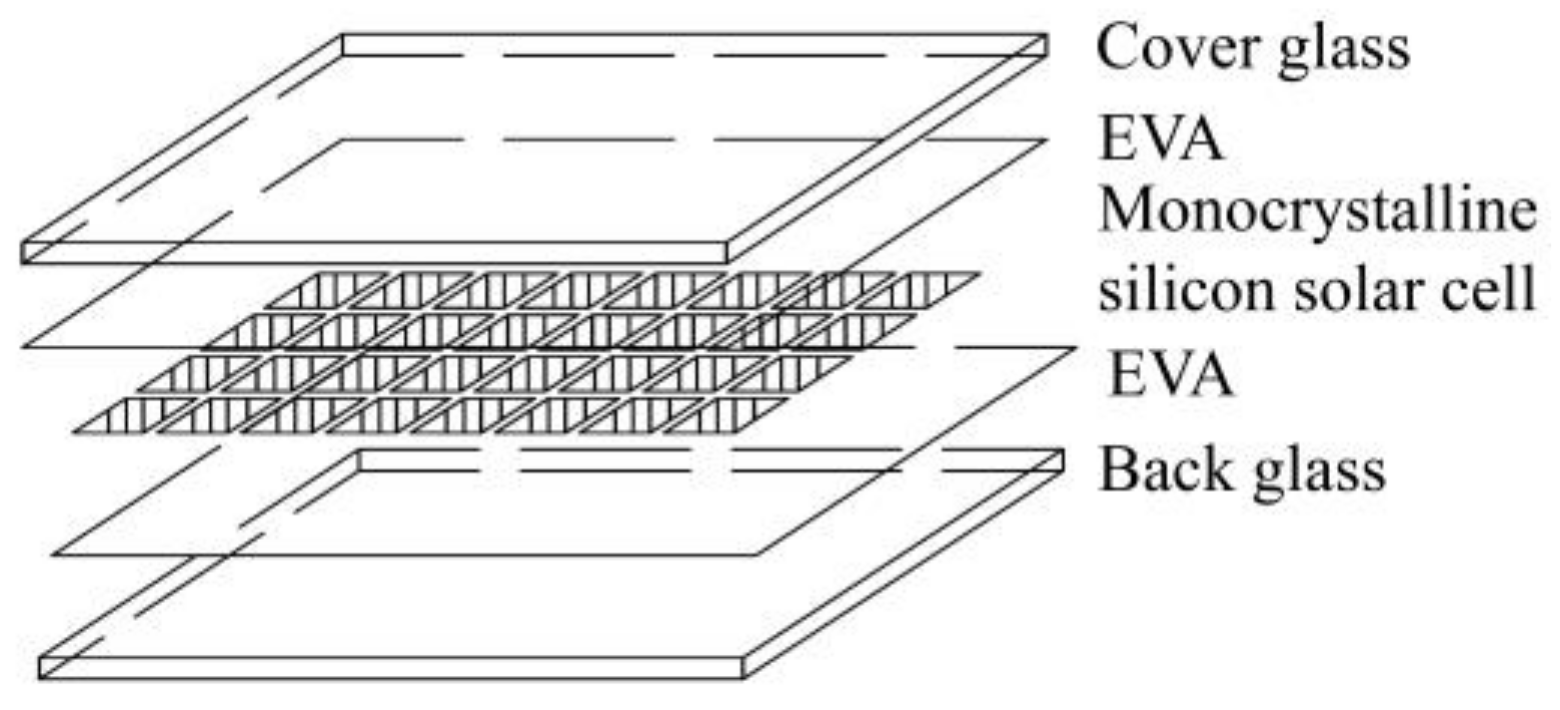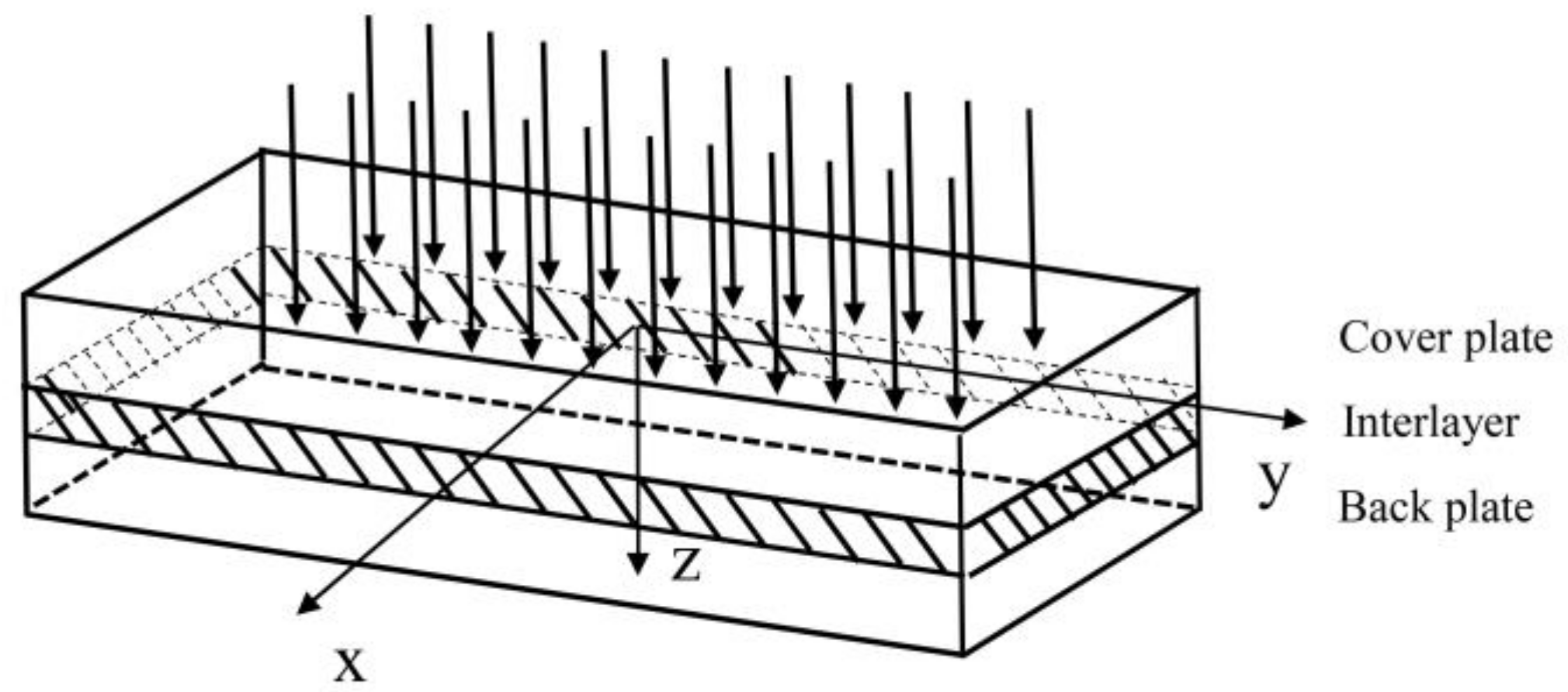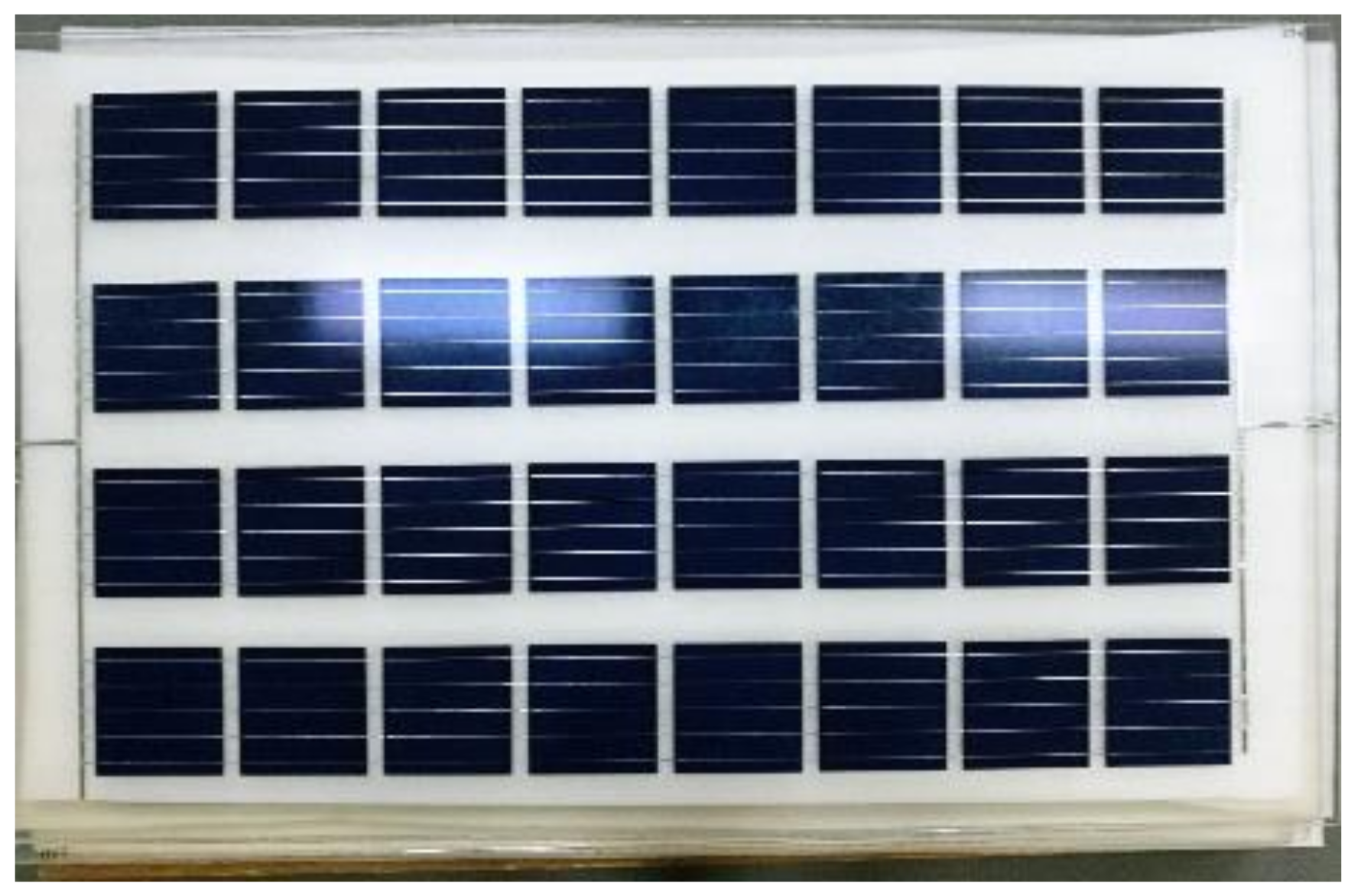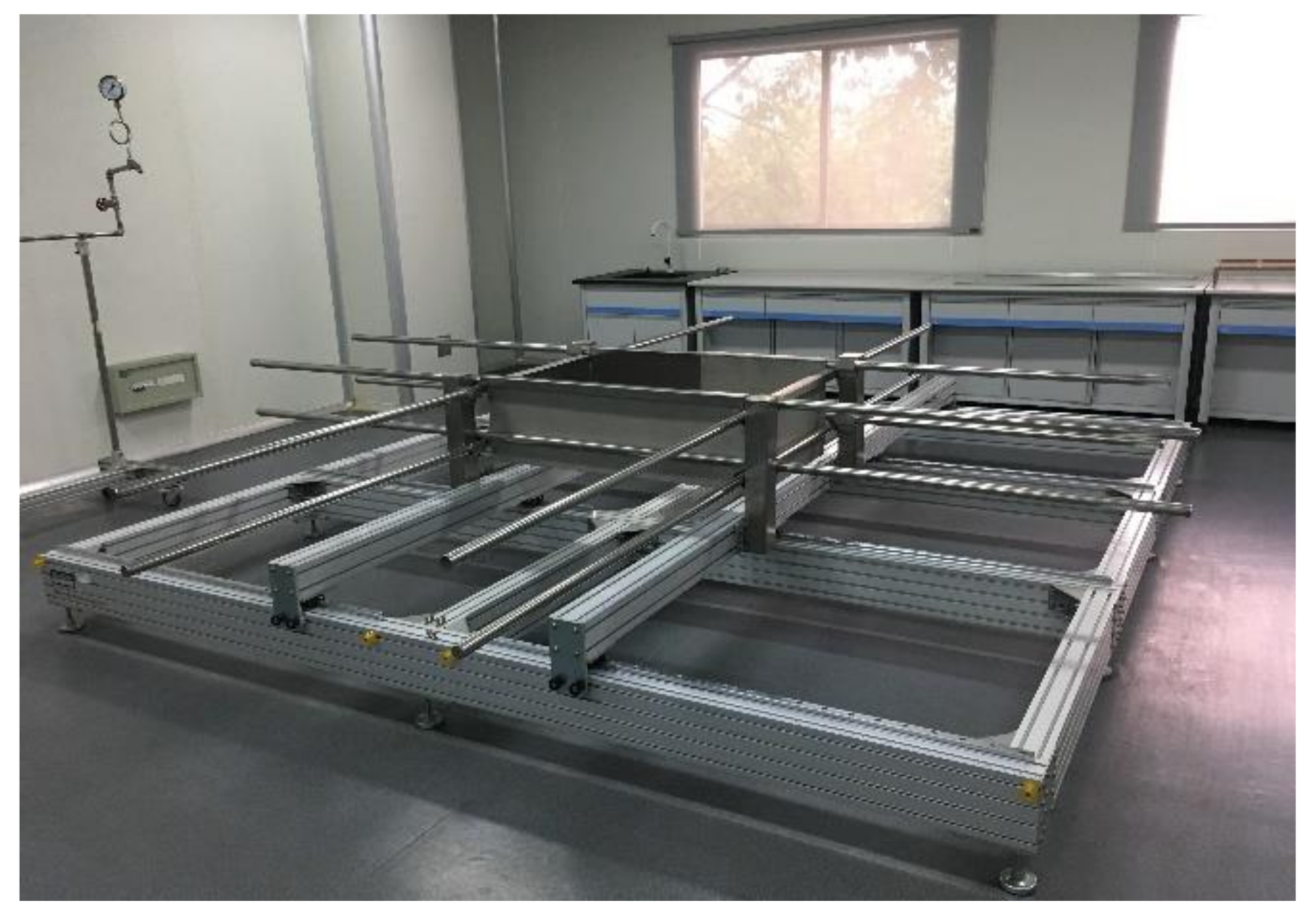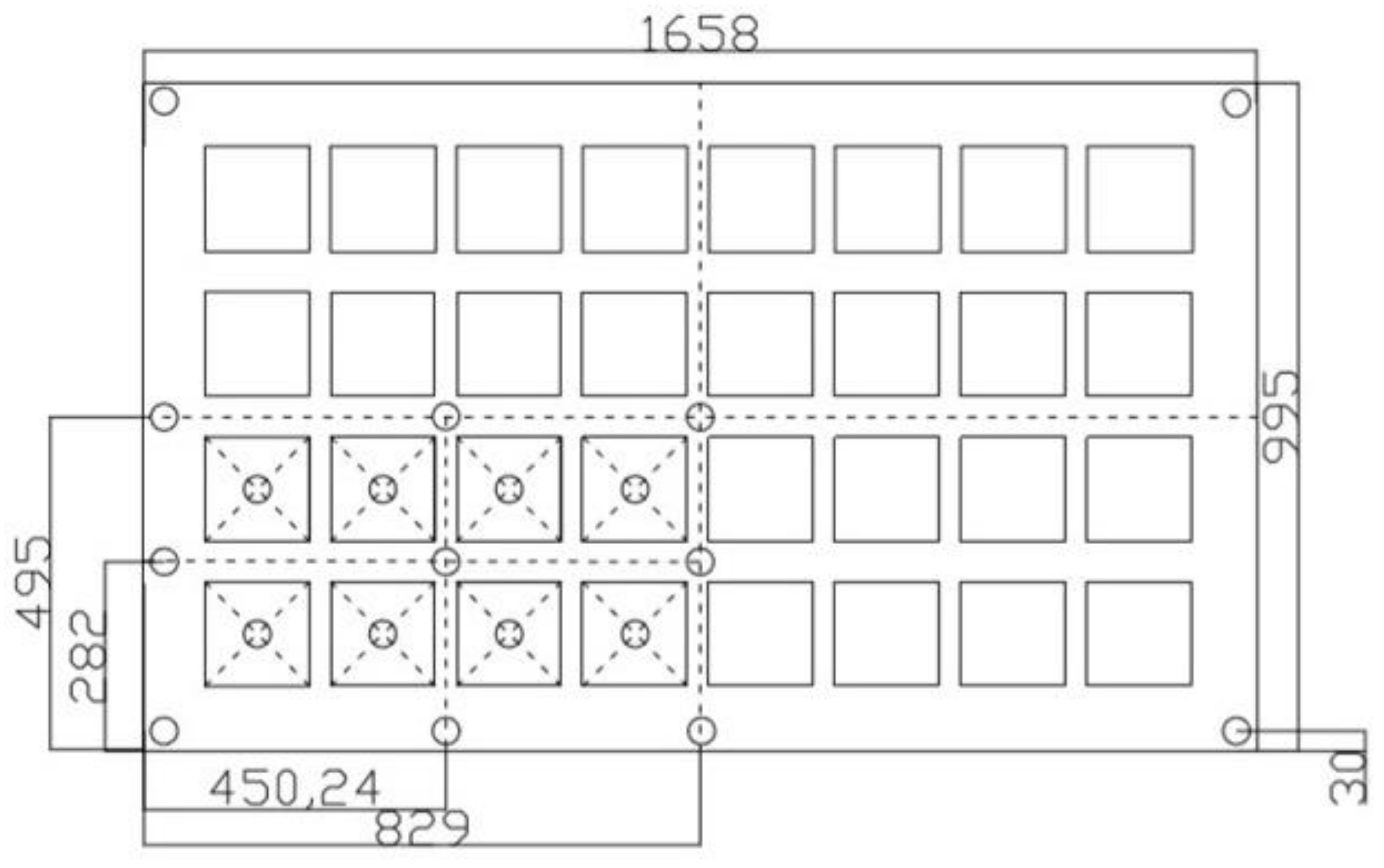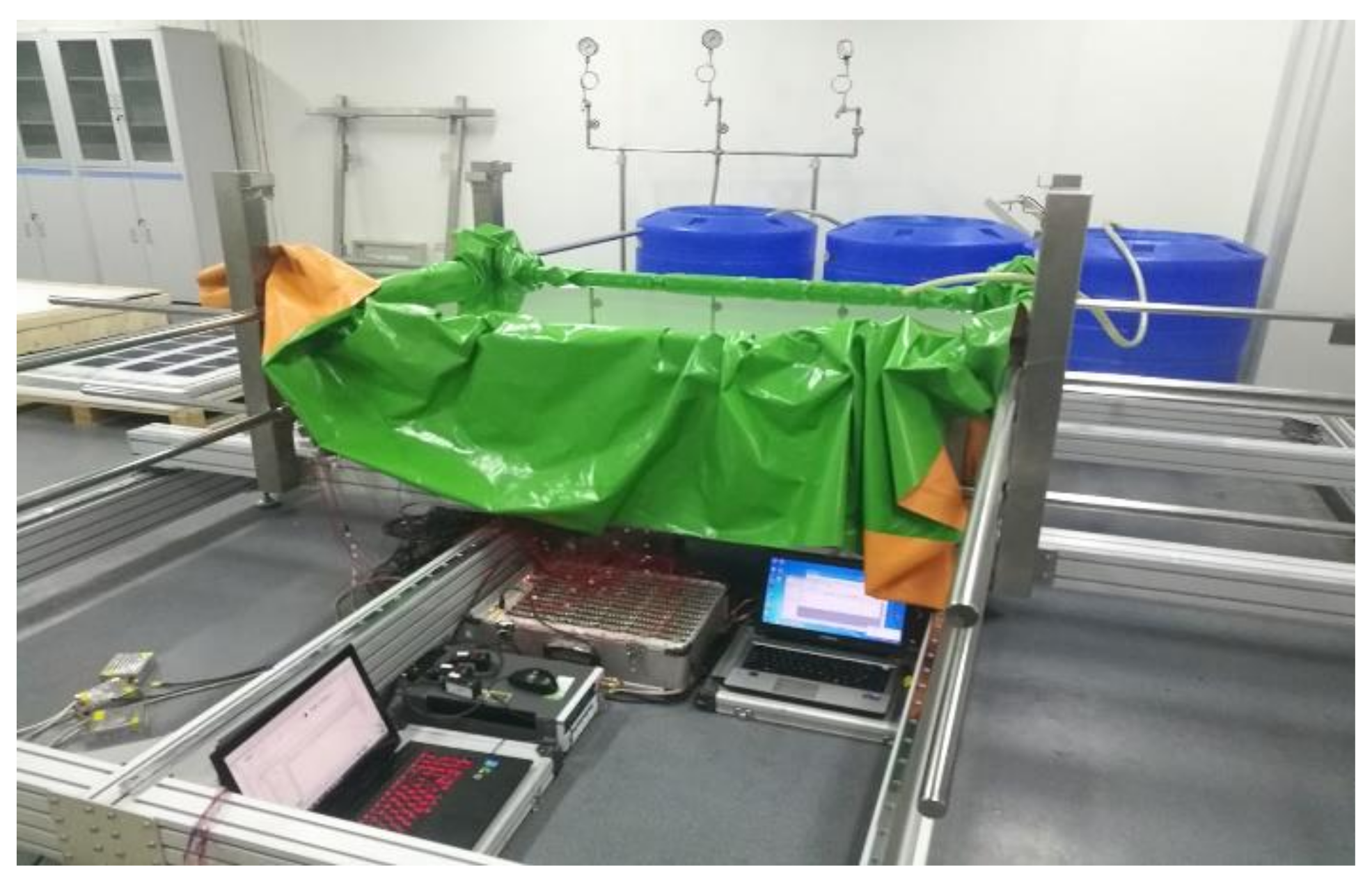1. Introduction
According to the report from Ministry of Housing and Urban–Rural Department of China, building consumes 40% to 50% of the total energy in China each year, which is one of the main reasons for the aggravation of energy consumption. Solar energy is a green and renewable energy, and it is widely spread around the world. Several technologies have been developed to use solar energy generating electricity. If solar energy can be used in the building, it will cut down the external energy consumed by the building and the total energy consumption will be reduced significantly. Among the existed technologies applying solar energy in buildings, building integrated photovoltaic (BIPV) has gained a great of attention and great advances in recent years. The main difference between building attached photovoltaic (BAPV) and BIPV is that the photovoltaic (PV) module is designed and constructed with buildings at the same time in BIPV, which makes it as one part of the building structure. When the BIPV building is running, on one hand, the PV components can generate electricity to realize the energy reduction. On the other hand, the PV components need to bear the external loads and behave as structural parts to ensure the safety of building.
The research and application of BAPV started from 1970s, while BIPV became commercially available two decades later [
1]. In 2014, U.S. National Renewable Energy Laboratory (NREL) promulgated an economic assessment and brief overview, in which the history of BIPV was summarized and some challenges about the BIPV future were stated [
2]. Meanwhile, the zero emission energy building European target for 2020 [
3] was presented and the research works about BIPV became more meaningful. In several review papers [
4,
5,
6,
7], the history, development and future opportunities of BIPV are stated carefully and it denotes that the needs of BIPV in next several decades are still huge. However, it shows that the mechanical behavior of the BIPV products are studied much less than energy efficiency and temperature change. Peng etc. [
8] pointed out that the building loads and PV module damage situation should be considered seriously in BIPV too.
Currently, there are several different types of PV modules existed in the market. All of them choose glass as the cover plate to make sure the absorption and transmission of sunlight. As to the bottom plate, it can be made of the transparent glass or opaque TPT, which makes double glass PV module or single glass PV module. Due to the requirements of lighting inside the building, the double glass PV module with better photopermeability are more suitable and acceptable in the real structures. Therefore, the PV panels studied in the present paper focusing on BIPV are double glass PV module which consists of two glasses and an interlayer in where the cells are sealed by ethylene vinyl acetate (EVA) or polyvinyl butyral (PVB).
When the double glass PV module is adopted in the building as BIPV, it needs to bear external loads to keep the structure safe. Especially, the snow load to roof and wind load to the window must be analyzed carefully. However, there is not any specific certification to provide the requirements on the double glass PV panel for bearing those loads. Only in the standard of PV module itself, IEC 61215 (2005) [
9], the bending test under 2.4 KPa uniformly distributed force is required to all commercial PV module. It is still unknown if that test standard can ensure the safety of double glass PV module worked as building components, so further researches must be made in here to understand their bending behavior clearly and develop some relative requirements.
Among the few studies about bending behavior of PV panel, Naumenko and Eremeyev [
10] believed that PV panel is a layered composite with relatively stiff skin layer and relatively soft core, since the ratio of shear moduli
for core material to skin glass is in the range between 10
−5 and 10
−2. They derived the differential equations for primary unknowns based on layer-wise theory, but the equations were only solved for plate strip with simply supported boundary condition. Eisentrager etc. [
11] applied layer-wise theory to analyze the bending behavior of PV module and laminated glass panel, and they presented a finite element formulation and a user-defined quadrilateral serendipity element. Eisentrager etc. [
12] also adopted first order shear deformation theories (FSDT) to study the PV panel and laminated glass with weak shear stiffness. A user-defined element is still developed and integrated with ABAQUS. In real buildings, some of the roofs or walls need to be designed as unsymmetrical laminates in order to make lightweight construction, so Weps [
13] choose them to do the research. A three-point bending test is performed and used to verify the proposed equations and finite element analysis. Similar works on symmetrical laminated glass beam for PV application are completed by Schulze etc. [
14].
As to the theories and mechanic models for laminate composite, Vedrtnam and Pawar [
15] made a review work on them and their introductions are mainly about the laminate glass plate which is extremely similar to PV panel. First order shear deformation theory (FSDT) is a widely-used approach for laminate composite, and the analytical solution or semi-analytical solution based on it are proposed and verified in many works [
16,
17,
18,
19,
20,
21,
22]. Zig-zag theory applies the piecewise functions to represent displacements of the plate with respect to the thickness coordinate, and the governing equations can be simplified a lot [
23,
24,
25,
26]. Layer-wise theory (LWT) is chosen by many researchers to study PV module. In LWT, the constitutive equations are derived for each layer itself, and interaction forces and compatibility are described more precisely [
10,
11,
13,
27,
28,
29,
30,
31,
32]. Except those, researchers also proposed some other theories and models, such as trigonometric shear deformation theory [
33], new higher order shear deformation theory [
34,
35], and so on. Then, the methods to solve the different partial differential equations are also developed by many researchers [
36,
37,
38]. However, in many of those works, the boundary conditions of the plates are only simply-supported for four edges since it is easier to solve the equations and get solutions.
In present paper, the bending behavior of double glass PV panel is studied carefully by both experimental and theoretical research. Different from many previous researches, a special boundary condition which is two opposite edges free and the other two edges simply-supported (annotated as SSFF) is considered. Although LWT has been used previously in PV module research, Hoff model which is one of the classical lamination theory (CLT) is adopted in this research. By developing a modified Rayleigh–Rita method, a closed-form solution is derived out. The experiment is designed using water pressure to produce uniformly distributed force, so it is much more accurate than other research works using sand or brick. A frame is manufactured to simulate the special boundary condition. Comparing the theoretical results with experimental results, the accuracy of the analytical solutions are verified. The theoretical model and solutions obtained in present work will be the fundamentals for the optimal design work in future.
2. Theoretical Analysis of Double Glass PV Panel
As studied by Naumenko and Eremeyev [
10], the main feature of double glass PV panel is the thin and relatively low shear moduli of interlayer comparing with the glass layer. A proper mechanical model is very important to describe the force transfer and deformation of the panel. Hoff model is one of the classical lamination theory, and it can analyze the laminate composite with soft core precisely. Therefore, Hoff model is applied to simulate PV panel and the corresponding governing equations are derived. Then, due to the special boundary condition, Rayleigh–Rita method is modified and utilized to obtain the closed-form solution for the bending deflection of PV panel with SSFF. At last, the strain and stress of each layer are calculated by the bending deflection.
2.1. Mechanical Model and Basic Hypothesis
The basic components of double glass PV panel are shown in
Figure 1, including cover glass, ethylene-vinylacetate (EVA), silicon solar cells, and back glass. Since silicon solar cells are so thin and fragile, they are embedded in the EVA material to be protected. According to the results from Naumenko and Eremeyev [
10], the EVA material layer carries out almost all the shear stress of interlayer while the bending moment and normal force are very small and can be negligible. In order to simplify the problem and emphasize the main characters of the PV panel, a laminate plate model is applied and several hypothesizes are made at the beginning of the structural analysis as follows.
- (1)
The cover and backboard glasses are treated as top and bottom surfaces of the laminate plate, respectively. And both of them are simulated as isotropic plates with constant flexural rigidity.
- (2)
The silicon solar cells are too thin to bear any shear stress, and two EVA layers play the main role of interlayer. The silicon solar cell layer is ignored and two EVA layers are merged as one layer which is defined as the interlayer only made of EVA. The whole PV panel is simplified as a three-layer composite, including cover plate, interlayer and back plate. The mechanical model of PV panel under uniformly distributed force and the corresponding coordinate system are shown in
Figure 2.
- (3)
According to the research results summarized by Naumenko and Eremeyev [
10] and Stefan-H. Schulze etc. [
14], in PV module, the ratio of the shear moduli between interlayer and surface layer is in the range between 10
−5 and 10
−2. The PV module is a typical soft core laminate plate and the stress of the interlayer in
x-
y plan should be ignored.
- (4)
Only the anti-symmetrical deformation is studied in present paper, so the stress and the strain of interlayer are very small and can be ignored, which is defined as , .
2.2. Hoff Model and Governing Equations
Hoff [
39] modified Reissner theory and developed a Hoff model for laminated plate. In Hoff model, the flexural rigidities of surface plates are calculated but the interlayer is a relative soft layer. As introduced in
Section 2.1, PV panels are just a kind of laminate plate structure with soft core and Hoff model (as shown in
Figure 2) is very suitable to represent them. According to Hoff model and based on those hypothesizes, the governing equations of the PV panels can be derived as
where
,
and
are unknown variables as cross section rotation at
x-
z plane,
y-
z plane and deflection at
z direction, respectively. Constant variables
D,
and
C are defined as Equations (9)–(11). In order to simplify the governing equations, two functions
and
are introduced and they are defined as Equations (4) and (5).
With Equations (1)–(3) and Equations (4) and (5), we could obtain the modified governing equations of PV panel under uniformly distributed force as
with
where
is the elastic modulus of the cover and the back glass plate,
is the Poisson’s ratio of the cover and the back glass plate,
is the shear modulus of EVA,
t and
h are the thickness of surface plate and EVA interlayer, respectively.
2.3. Special Boundary Condition
In previous researches, in order to simplify the problem, all four edges with simply supported boundary condition (as shown in
Figure S1) is mostly studied. However, it is different in some accessory structures, such as glass eave or glass shutter. In those structures, the glasses or PV panels adopt the boundary condition SSFF and the analysis of it is limited. In present paper, that special boundary condition is studied carefully and the closed-form solution of it is derived out. As shown in
Figure S2, the PV panel is simply supported at the edges
x = 0 and
a, and free–free at the edges
.
The boundary condition studied in present paper should satisfy the formulas as follows.
At the edges x = 0 and a, Equation (12) can be derived out as follows.
Combining with Equations (4) and (5) and following the procedure derived by previous research work, we can obtain Equation (15) based on Equation (12).
At the edges
, the boundary condition is very different from those studied before and so a specific derivation is stated. According to the stress–strain relationship of laminated plate [
39], the Equation (13) could be rewritten as follows.
Equations (16) and (5) can yield
Equations (17) and (6) can yield
Equations (19) and (6) can yield
At last, Equations (20) and (6) could yield
Equations (14) and (21)–(24) are the specific formulas for the special boundary condition discussed in present paper, and they will be applied in the derivation work for closed-form solution of deflection.
2.4. Modified Rayleigh–Rita Method and Closed-Form Solutions
Rayleigh–Rita method is a useful way to solve the partial differential equations, and it uses the expansion of the unknown functions of deflection in infinite series form. It is possible to approach or be close to the exact solutions of the equations by taking the sufficient number of the terms in the series. A modified Rayleigh–Rita method is applied in present paper due to the special boundary condition, and the closed-form solutions of the governing equations could be obtained. Since the boundary condition is simply supported at edges
x = 0 and
a, the sinusoidal function should be utilized and the unknown variable
ω and
f is assumed as
where
;
and
are the general solutions;
is the specific solution;
,
,
,
and
are unknown variables needed to be solved.
The general solution of Equation (7) is studied firstly, so the assumption of general solution, , is substituted into Equation (27).
By merging the same terms, the characteristic equation is written as
with
Defining , , , , Equation (28) is also rewritten as Equation (31).
Equation (31) is a sextic equation and there are not extract root formulas for it. However, it could be solved as following. By defining a new variable,
, Equation (31) is transformed as
with
The roots of the cubic Equation (32) can be solved by
where
,
and
.
According to the defination of
S, the roots of Equation (28) are finally sovled as
,
and
, in where the varaibles
β could be calculated by
The six roots of the characteristic Equation (28) has been solved and the general solution of Equation (7) should be written in the format as Equation (37).
Then, the specific solution of Equation (7) shoulde be solved to satisfy Equation (38).
Bending behavior of PV panel under uniformlly distributted force is studied in present paper, so the force
q is a constant. Taking the Fourier expansion and doing odd continuation on the right term in Equation (38), it can be expressed as
Substituting Equation (39) into Equation (38), the specific solution can be solved as follows.
The full solution of Equation (7) consists of the general solution and specific solution, and it could be denoted specifically as
The same procedure could be applied to solve Equation (8) with the solution assumption as shown in Equaiton (26), so the solution of Equation (8) could be denoted by
where
The full solutions of Equations (7) and (8) could be calculated by Equations (41) and (42), respectively. However, there are total eight unkown variables in the solutions, including (r = 1 to 6) and (r = 1 and 2). The boudnary conditions stated as Equations (21)–(24) are applied in here to obtain the exact values of those unknown variables. Substituting Equations (41) and (42) into Equations (21)–(24), the eight unknown variables must satisfy the following equations.
Substituting
, there are eight equations for eight unknown variables based on Equations (46)–(49), and all variables could be solved to get exact values. Once
ω is solved by Equation (41), the deflection of PV panel under uniformly distributed force could be calculated based on Equation (6) as
2.5. Finite Element Analysis
To verify the results of Hoff model used above, a finite element analysis is performed by the use of FEM software ANSYS. The double glass PV panels are simplified as a five layers composite structure, and the material of each layer is simulated as isotropic material. The mechanical properties of the model materials are shown in
Table 1. Considering the element characteristics that it could be layered, four-node SHELL181 composite shell element is used for modeling (as shown in
Figure S3). The rectangular shell structure is divided into five layers which are cover glass, EVA, silicon battery sheet, EVA and back glass, respectively. Since it’s too thin to make any influence, the battery layer is assumed as a continuous layer.
Besides three displacement degrees of freedom (DOF), the SHELL element has extra three rotation DOFs at each node, comparing with the SOLID element. In order to simulate the boundary conditions accurately, two long edges parallel to the Y axis are fixed in the Z direction while the other two short edges parallel to the X axis are completely free. The node constraints of both X and Y directions are applied at the four corners (as shown in
Figure S3). By doing in this way, it can simulate the special boundary condition studied in present paper.
3. Experimental Analysis of Double Glass PV Panel
In order to verify the structural analysis results and test the real mechanical properties of PV panels, bending testing is performed for 8 specimens at room temperature. The specimens are all the double glass photovoltaic modules (as shown in
Figure 3) which are provided by Suzhou Tenghui Photovoltaic Technology Co., Ltd (Changshu, China). Among those specimens, there are 3 specimens with size 1658 × 995 × 5 (unit: mm) and 3 specimens with size 1658 × 995 × 7.4 (unit: mm). The two groups of PV panels are different at the thickness of the glass. The cover and back glasses are 2 mm for first group and 3.2 mm for the second group, but the thickness of interlayer is same as 1 mm.
The bending test was completed in National Photovoltaic Product Quality Supervision and Inspection Center at Chengdu, referring to the current quality inspection certification, IEC 61215 [
9]. The test frame (as shown in
Figure 4) can simulate the discussed special boundary condition SSFF. Due to the symmetry of PV panel and the loading, the strain measurement points are only set on a quarter part of the panel with total 20 points, which is shown as
Figure 5. The PV panel strains are collected by DH3816 static strain gauge, and the deflection at panel center is measured by a laser displacement meter installed under the panel. In previous experimental works, sands or bricks were usually used to make uniformly distributed force but they are not so accurate. Different from those works and due to its better fluidity, water pressure is applied in present paper to simulate the uniformly distributed force. The loading plan is different for two groups of PV panels since the bending behavior of them are different. As to the 5 specimens with 2 mm glass, it adds 0.5 kPa at each level until maximum pressure 2.5 kPa, then it unloads 0.5 kPa at each step until back to 0 kPa (as shown in
Figure S4). In the experiments of 3 specimens with 3.2 mm glass, the water pressure is added 1 kPa at each step until reaching maximum pressure 4 kPa, and it is unloaded 1 kPa for each level until 0 kPa pressure (as shown in
Figure S4). The duration time of the load per stage is same as 8 min, so the deformation of bending panel can be measured precisely. Water proof cloth, which is installed on the PV panel as
Figure 6, is used to protect the strain gauge from water and it can help making water pressure applied evenly on the whole PV panel.
